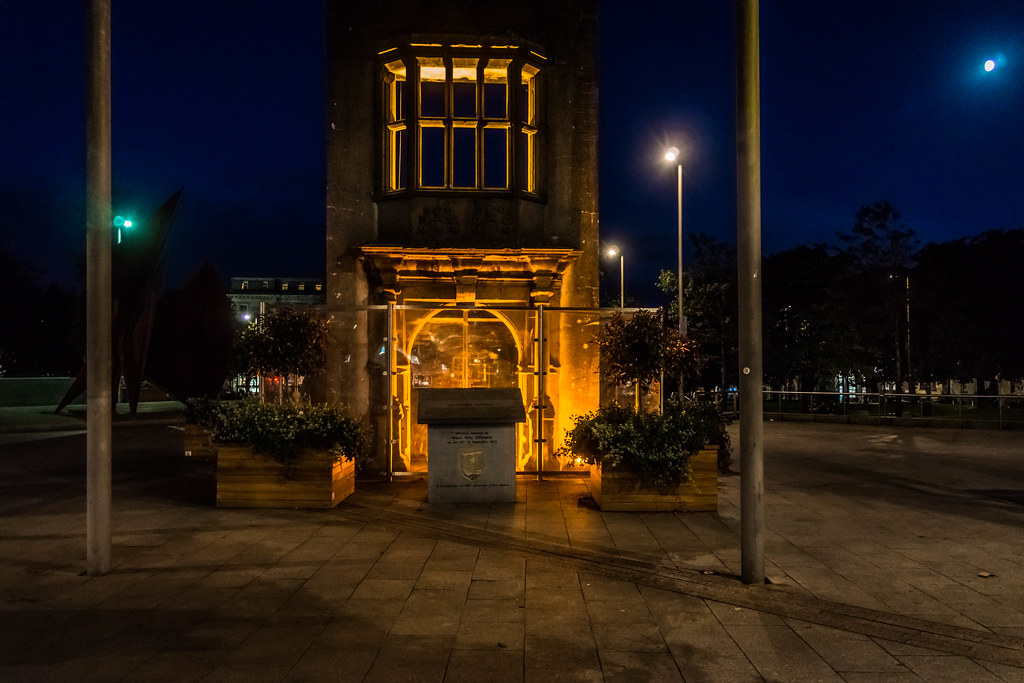
Custom Search
THE GREEN MENU OPTIONS ARE MOBILE FRIENDLY AND ARE FASTER SO THEY ARE RECOMMENDED. THE RED MENU OPTIONS ARE SOMEWHAT SLOWER DEPENDING ON YOUR DEVICE OR BROWSER AND ARE MORE SUITABLE FOR DESKTOPS AND LAPTOPS. THE BLUE OPTIONS ARE PAGE LINKS AND WILL BE PHASED OUT GOING FORWARD
BROWNE DOORWAY - EYRE SQUARE
Freestanding former entrance bay to Brown house of 1627, removed from original location in 1905 to form feature in Eyre Square. Structure comprises rendered wall incorporating limestone doorway and oriel window. Doorway has round-arch door opening in slightly recessed square-headed inset, with moulded imposts flanked by Tuscan engaged columns with Ionic capitals on tall pedestals, latter with moulded diamond-shaped panels, having moulded blocks above capitals and supporting pulvinated frieze and moulded cornice. architrave below frieze had quote from Psalms 127:1 ''Nisi Dominus aedificaverit domum, in vanum laboraverunt, qui aedificant eam' (If the Lord does not build a house, then those who build it work in vain)'. Canted five-light oriel window has chamfered mullions and transom, apron between window and doorway having carved coats of arms of Martin Browne and Marie Lynch, with engraved date and low relief carved dragons to sides. Engraved render plaque to rear of wall. Monument located at northern end of Eyre Square set into paved area.
As is pointed out by its plaque, this monument is 'a reminder of the great architecture in the days of Galway's civic opulence' between the sixteenth and eighteenth centuries. The Renaissance doorway is very rare in the city and displays fine carved detailing. The coats of arms of the two families united by marriage is a typical device found in medieval and late medieval contexts and the relocation of the structure to Eyre Square has salvaged something of the building while significantly enhancing Galway's finest civic space.
As is pointed out by its plaque, this monument is 'a reminder of the great architecture in the days of Galway's civic opulence' between the sixteenth and eighteenth centuries. The Renaissance doorway is very rare in the city and displays fine carved detailing. The coats of arms of the two families united by marriage is a typical device found in medieval and late medieval contexts and the relocation of the structure to Eyre Square has salvaged something of the building while significantly enhancing Galway's finest civic space.
SORRY FOR THE DELAY
